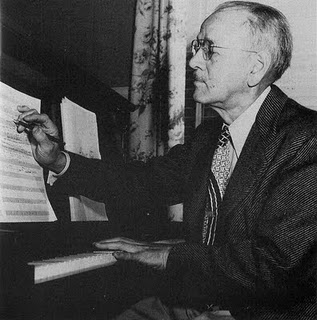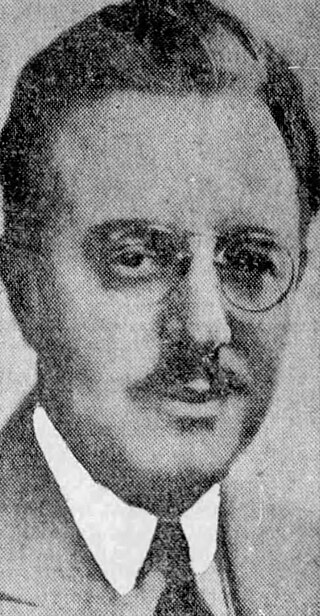Related Research Articles

Animation is a filmmaking technique whereby still images are manipulated to create moving images. In traditional animation, images are drawn or painted by hand on transparent celluloid sheets (cels) to be photographed and exhibited on film. Animation has been recognized as an artistic medium, specifically within the entertainment industry. Many animations are either traditional animations or computer animations made with computer-generated imagery (CGI). Stop motion animation, in particular claymation, has continued to exist alongside these other forms.

Carl William Stalling was an American composer, voice actor and arranger for music in animated films. He is most closely associated with the Looney Tunes and Merrie Melodies shorts produced by Warner Bros., where he averaged one complete score each week, for 22 years.
The golden age of American animation was a period that began with the popularization of sound synchronized cartoons in 1928 and gradually ended in the 1960s when theatrical animated shorts started to lose popularity to the newer medium of television. Animated media from after the golden age, especially on television, were produced on cheaper budgets and with more limited techniques between the late 1950s and early 1980s.

Walter Scott Bradley was an American composer, pianist, arranger, and conductor.

Bosko is an animated cartoon character created by animators Hugh Harman and Rudolf Ising. Bosko was the first recurring character in Leon Schlesinger's cartoon series and was the star of thirty-nine Looney Tunes shorts released by Warner Bros. He was voiced by Carman Maxwell, Bernard B. Brown, Johnny Murray, and Philip Hurlic during the 1920s and 1930s and once by Don Messick during the 1990s.
The Van Beuren Corporation was a New York City-based animation studio that produced theatrical cartoons as well as live-action short-subjects from the 1920s to 1936.

Burton F. Gillett was a director of animated films. He is noted for his Silly Symphonies work for Disney, particularly the 1932 short film Flowers and Trees and the 1933 short film Three Little Pigs, both of which were awarded the Academy Award for Best Animated Short Film and both of which were selected for inclusion in the National Film Registry.
William "Hicks" Lokey was an American animator. He is best known for his work at Fleischer Studios.
Events in 1937 in animation.
The Screen Cartoonist's Guild (SCG) was an American labor union formed in 1938 in Los Angeles, California. The SCG was formed in the aftermath of protests at Van Beuren Studios and Fleischer Studios, and represented workers and resolved issues at major American animation studios such as Walt Disney Productions.
Events in 1938 in animation.
For the history of animation after the development of celluloid film, see history of animation.
Events in 1913 in animation.
Events in 1911 in animation.
The 1937 Fleischer Studios strike was a labor strike involving workers at Fleischer Studios in New York City. The strike commenced on May 7 of that year and ended on October 12. The strike was the first major labor dispute in the animation industry and resulted in the industry's first union contracts.
Events in 1909 in animation.
Events in 1908 in animation.
Events in 1904 in animation.
Events in 1902 in animation.
Events in 1857 in animation.
References
- ↑ "Charles-Émile Reynaud". Who's Who of Victorian Cinema. Retrieved 2007-03-11.
- ↑ "Luikerwaal - Fantoccini Slides".
- ↑ "Gossip about ghosts". Slide Readings Library. The Magic Lantern Society. Archived from the original on 28 July 2011. Retrieved 26 February 2011.
- ↑ Page 35, Paranormal Media: Audiences, Spirits and Magic in Popular Culture, Author: Annette Hill, Publisher: Routledge, 2010, ISBN 9781136863189, ...One public lecture titled 'Gossip about Ghost' by former chemist George Tweedie claimed 'spook hunting has recently become as fashionable as Slumming'...
- ↑ Page 220, The Chemical News and Journal of Industrial Science; with which is Incorporated the "Chemical Gazette.": A Journal of Practical Chemistry in All Its Applications to Pharmacy, Arts and Manufactures, Volume 37, Contributor: William Crookes, Publisher:Chemical news office, 1878, ...A process for coating iron with magnetic oxide by the action of heated air. By George R. Tweedie...
- ↑ "Fantoccini Slides". www.luikerwaal.com.
- ↑ Sigall (2005), pp. 84–86
- ↑ Ellenberger, Allan R. (2001). Celebrities in Los Angeles Cemeteries: A Directory. McFarland. ISBN 978-0-7864-5019-0 . Retrieved 22 March 2020.
- ↑ Dial, Donna (2000) Cartoons in Paradise: How the Fleischer Brothers Moved to Miami and Lost Their Studio. Florida: Florida Historical Society pp. 309-30
- ↑ Molina Campos y la taba Archived 2017-08-04 at the Wayback Machine by Andrés Cáceres on Los Andes, 21 Nov 2004
- ↑ Maltin, Leonard. Of Mice and Magic.
- ↑ Merritt, Russell; Kaufman, J. B. (2016). Walt Disney's Silly Symphonies: A Companion to the Classic Cartoon Series (2nd ed.). Glendale, CA: Disney Editions. pp. 200–203. ISBN 978-1-4847-5132-9.
- ↑ Holtz, Allan (2012). American Newspaper Comics: An Encyclopedic Reference Guide. Ann Arbor: The University of Michigan Press. p. 400. ISBN 9780472117567.
- ↑ Markstein, Don. "Col. Heeza Liar". Don Markstein's Toonopedia. Retrieved 2 April 2020.
- ↑ From the Tinder Box to the Ugly Duckling, Danish Film Institute, archived from the original on 2008-01-31, retrieved 2009-02-05
- ↑ Barrier (2007), p. 71–72
- ↑ Barrier (2007), p. 74
- ↑ "Molly Moo-Cow entry". Toonopedia. Archived from the original on 2016-03-09.
- ↑ Koszarski (2008), p. 319-320
- ↑ Sito (2006), unnumbered pages
- ↑ Neuwirth (2003), unnumbered pages
- ↑ Sigall (2005), p. 88-90
- ↑ Strauss (2002), pp. 5–13.
- ↑ "Funnyworld Revisited: Carl Stalling". Michaelbarrier.com. Retrieved 10 October 2018.
- ↑ Scott Bradley at Walter Lantz|Cartoon Brew
- ↑ Goldmark, Daniel (2005), "Tunes for 'Toons: Music and Hollywood Cartoons", University of California Press, p. 46.
- ↑ Maltin, Leonard (1987), "Of Mice and Magic", Penguin Books.
- ↑ Bradley, Scott (November 1, 2002). "Music In Cartoons". In Goldmark, Daniel; Taylor, Yuval (eds.). The Cartoon Music Book. Chicago Review Press. pp. 115–120. ISBN 978-1556524738.